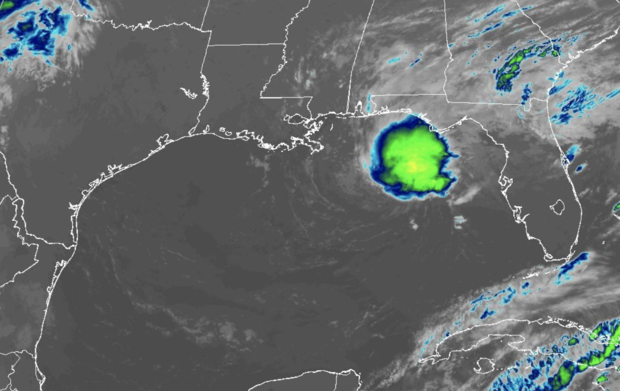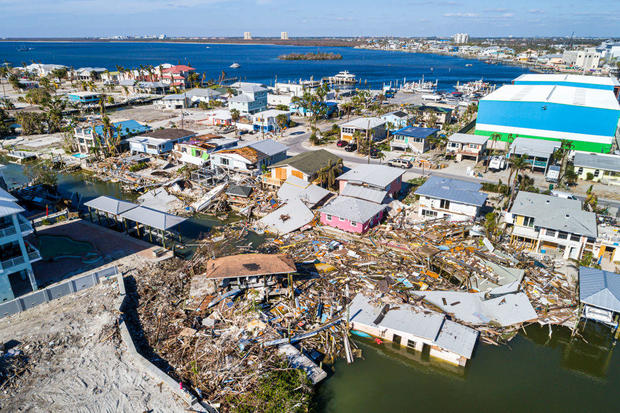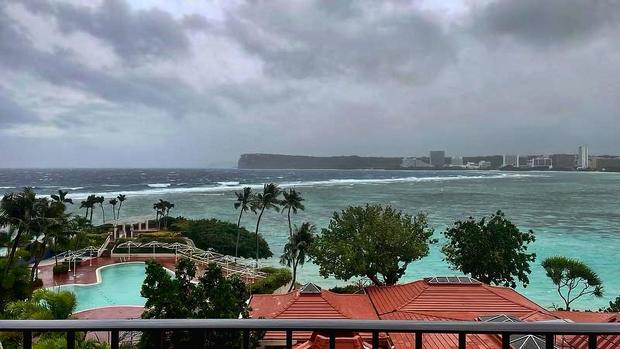Hurricanes vs. typhoons vs. cyclones: What's the difference between the three types of storms?
The 2023 Atlantic hurricane season officially began on Thursday, as scientists at the National Oceanic and Atmospheric Administration predicted a "near normal" stretch of storms between June 1 and Nov. 30. The agency said it expects between 12 and 17 storms will happen before the season ends this year, as well as five to nine hurricanes. Officials anticipate that one to four of them will be major hurricanes.
Experts have already warned of a tropical disturbance in the Gulf of Mexico that the National Hurricane Center is tracking off Florida's coast. In its latest forecast, the agency said changes in the weather system observed overnight potentially created "marginally favorable" conditions for the development of a cyclone, which could mean a number of different things. Depending on whether it gains strength and continues to move toward land, forecasters said it could form off the coast of Florida as a tropical storm.
What makes a cyclone?
The terms hurricane, typhoon and tropical cyclone can all refer to the same kind of storm. A tropical cyclone is a broad classification, used to describe any weather phenomenon characterized by rotating, low-level systems of clouds and thunderstorms that develop over waters in tropical or subtropical regions, according to NOAA.

These weather systems are then categorized more specifically based on their strength, a metric that corresponds with maximum sustained wind speeds. When a storm's sustained winds remain below 39 miles per hour, they are called tropical depressions — the weakest type of tropical cyclone. Once a tropical cyclone's sustained wind speeds exceed that minimum threshold, it becomes a tropical storm.
What makes a hurricane?
Tropical cyclones with maximum sustained wind speeds of 74 mph or higher are either classified as hurricanes, typhoons, or simply tropical cyclones, and which of those three terms meteorologists ultimately assign to a given weather system depends on where in the world it forms.
The storms are called hurricanes when they happen in the North Atlantic, central North Pacific and eastern North Pacific oceans, according to NOAA. Tropical cyclones whose wind speeds and locations meet the criteria to be classified as hurricanes are categorized further using the Saffir-Simpson Hurricane Wind Scale, a ranking system that places storms in categories labeled 1 through 5.
The scale is based only on a storm's maximum sustained wind speed without accounting for additional hazards like storm surge, flooding and tornadoes, which, weather officials say, can occur as a result of hurricanes that fall within any of its five categories.
A Category 1 hurricane refers to a tropical cyclone with maximum sustained wind speeds between 74 mph and 95 mph, according to the National Hurricane Center at NOAA. Hurricanes that fall within this category can bring with them "very dangerous winds" that produce "some damage." Officials warn that "well-constructed frame homes could have damage to roof, shingles, vinyl siding and gutters," during a Category 1 hurricane, while "large branches of trees will snap and shallowly rooted trees may be toppled." Power outages are likely and could potentially last "a few to several days" due to "extensive damage to power lines and poles," according to the hurricane center.

A hurricane whose maximum sustained wind speeds reach 96 mph but remain below 110 mph are considered Category 2 storms on the Saffir-Simpson scale. They are defined by "extremely dangerous winds" that "will cause extensive damage" to roofs and siding, snap and uproot enough trees to block roads, and likely lead to "near-total power loss" with outages that could last several days or weeks.
Hurricanes that fall within the latter categories of the Saffir-Simpson scale — Categories 3 to 5 — are considered "major" storms that "can cause devastating to catastrophic wind damage and significant loss of life simply due to the strength of their winds," according to the hurricane center.
A Category 3 hurricane is one whose maximum sustained wind speeds fall between 111 mph and 129 mph, ensuring "devastating damage" to areas in its path. These storms carry the potential for major destruction affecting well-built homes and buildings, and are expected to cut off electricity and water to impacted places for days or weeks.
When wind speeds reach 130 mph but do not exceed 156 mph, a hurricane is defined as Category 4 and expected to cause "catastrophic damage" where it hits, leaving most of the area "uninhabitable for weeks or months." Hurricane Ida, which struck Louisiana in August 2021, was a Category 4 storm.
A Category 5 hurricane, with maximum wind speeds exceeding 157 mph, is also noted for its "catastrophic" consequences on the Saffir-Simpson scale, which uses similar criteria to describe the expected destruction caused by Category 4 and Category 5 hurricanes. Hurricane Ian, which struck Florida last year, was a Category 5 storm.
What makes a typhoon?
In the Southwest Pacific, tropical cyclones with maximum wind speeds of 74 mph or higher are called typhoons.
When a powerful tropical cyclone hit Guam last week, bringing turbulent winds of at least 150 mph to the island, its strength and location led to the storm's now widely-recognized distinction as Typhoon Mawar. The destructive cyclone was technically a "super typhoon," which refers to a tropical cyclone, originating in that part of the world, that carries sustained winds over 150 mph.
If a similar storm were to occur in a different region, it could be called a hurricane. Take, for example, Hurricane Ian, the tropical cyclone that devastated parts of Florida with winds up to 160 mph in the fall of last year.

The key differences
Tropical cyclones with at least 74 mph winds are only differentiated as hurricanes, typhoons or the generic term "tropical cyclone," because of where they occur. If two storms with similar properties developed over the North Atlantic and Southwest Pacific Oceans, the former would be called a hurricane and the latter would be called a typhoon due to their respective locations.
Meanwhile, storms that develop in the South Pacific and Indian Ocean are always called tropical cyclones, regardless of their sustained wind speeds. In the Southwest Pacific or Southeast Indian Oceans, storms with hurricane or typhoon-level wind speeds, exceeding 74 mph, are called severe tropical cyclones. Those that form over the North Indian Ocean are called severe cyclonic storms.
Technically, how the strength of a tropical cyclone that meets either hurricane or typhoon criteria is conveyed to the public also differs depending on its location, as the Saffir-Simpson scale is explicitly meant to categorize tropical cyclones with at least 74 mph winds in hurricane territories. The technical criteria to describe the strength of a typhoon is less specific, with "super typhoon" being the only distinction. However, when Typhoon Mawar hit Guam, the National Weather Service still assigned it a Category 4 rating based on the Saffir-Simpson scale.
- In:
- tropical cyclone
- National Weather Service
- Tropical Storm
- Hurricane
Disclaimer: The copyright of this article belongs to the original author. Reposting this article is solely for the purpose of information dissemination and does not constitute any investment advice. If there is any infringement, please contact us immediately. We will make corrections or deletions as necessary. Thank you.







